First Aid Certification: Why It Matters and How to Maintain It
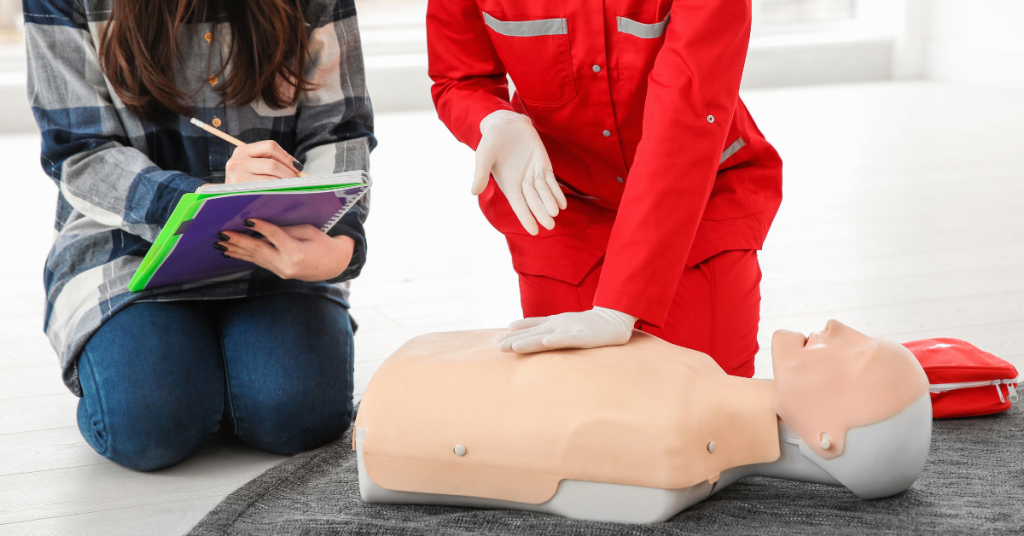
In today’s fast-paced world, emergencies can arise at any moment, making first aid certification not just a skill but a necessity. The ability to respond effectively to accidents or health crises is invaluable, whether in the home, workplace, or public spaces.
This article aims to shed light on the crucial role of first aid certification, emphasising how this knowledge can be a pivotal factor in saving lives and minimizing the severity of injuries.
We’ll explore everyday scenarios, from minor accidents in the kitchen to more serious situations like someone experiencing a heart attack in a public setting, highlighting how first aid skills can turn an ordinary bystander into a lifesaving hero.
As we delve into the realms of first aid, we’ll see that being prepared isn’t just about responding to emergencies—it’s about transforming fear and helplessness into confidence and proactive care.
The Importance of First Aid Certification
The value of first aid certification extends far beyond the confines of a classroom or a textbook. It embodies a crucial set of life-saving skills that can make a monumental difference in critical situations. By equipping individuals with the knowledge and techniques to respond effectively in emergencies, first aid certification empowers them to act swiftly and confidently, often bridging the gap between an accident occurring and professional medical help arriving. This empowerment is not only a boon in crisis situations but also brings significant benefits in both professional and personal spheres.
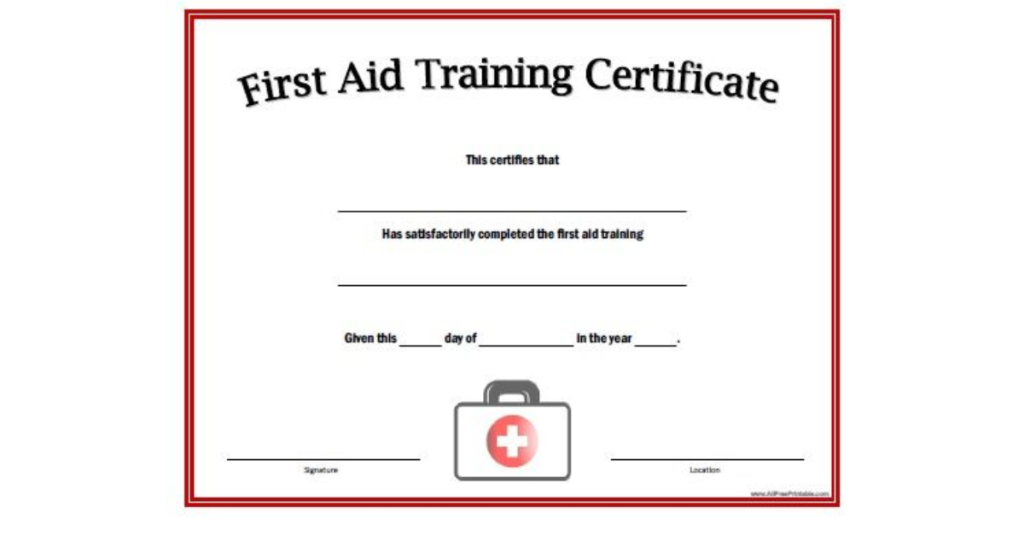
- Immediate response to accidents, heart attacks, or choking, potentially saving lives
- Knowledge of CPR and emergency medical techniques
- Ability to assess situations and provide crucial care until professional help arrives
- Increased confidence in handling emergency situations effectively
- Skills to manage and control the scene, reducing panic and chaos
- Capability to provide not just physical aid but also emotional support in crises
Professional and Personal Benefits:
- Enhanced resume with first aid certification, desirable in many job roles
- Contribution to workplace safety, making it a safer environment for everyone
- Personal peace of mind knowing you can protect and care for loved ones in emergencies
Key Components of First Aid Certification
First aid certification encompasses several essential components that prepare individuals to handle a range of medical emergencies confidently.
From Basic Life Support (BLS) techniques to managing common injuries and responding to special situations, the curriculum is designed to equip learners with comprehensive emergency response skills.
Each component plays a vital role in ensuring that individuals can provide effective aid in various scenarios, making this training indispensable for anyone looking to enhance their emergency preparedness.
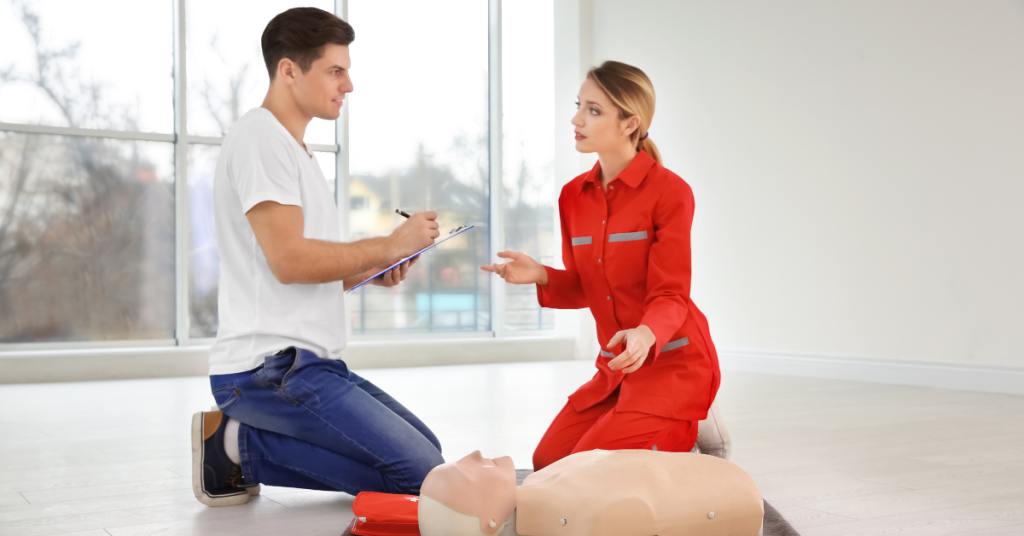
- Training in CPR (Cardiopulmonary Resuscitation) for adults, children, and infants
- Use of Automated External Defibrillators (AEDs)
- Techniques for managing airway obstructions and ensuring open airways
- First aid for sprains and strains, including immobilisation techniques
- Treatment protocols for burns, cuts, and abrasions
- Recognizing and stabilizing fractures and dislocations
Emergency Response Techniques:
- Rapid assessment of emergency situations
- Prioritisation of care in multi-injury scenarios
- Techniques for moving and transporting injured individuals safely
- Effective response to choking incidents in adults and children
- Identification and management of allergic reactions, including the use of adrenaline auto-injectors
- Recognition and first aid for heat-related illnesses like heat stroke and heat exhaustion
How to Get Certified
Gaining first aid certification is a journey that begins with selecting the right training program, a decision that can vary based on individual needs and circumstances
In today’s digital age, prospective trainees also face the choice between online and in-person training, each format offering distinct advantages.
Understanding what to expect in terms of duration, cost, and course content is crucial for potential trainees to align their learning with their objectives and schedules.
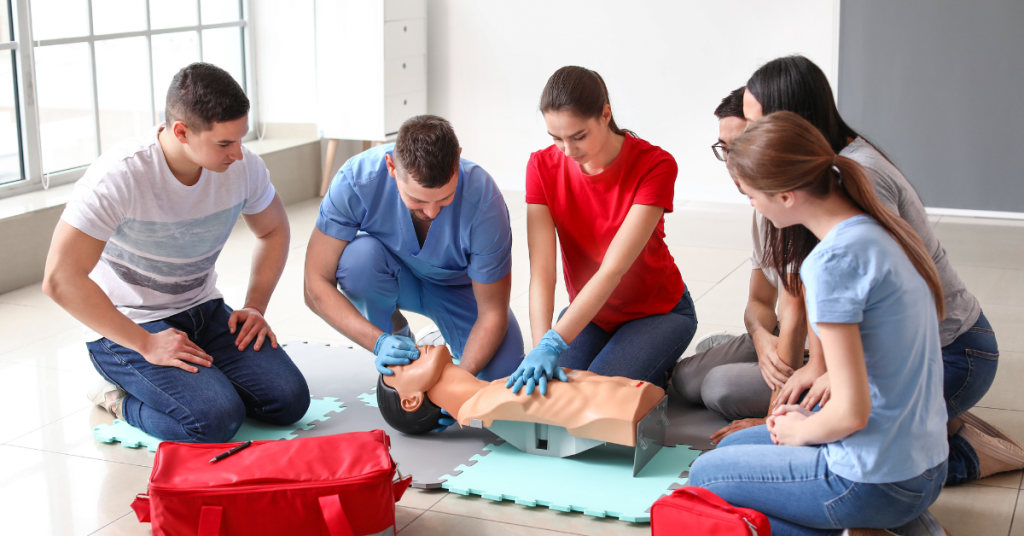
- Research and compare courses from reputable organisations like The First Aid Nest.
- Consider specialised courses tailored to specific environments, such as wilderness first aid or childcare first aid.
- Check the accreditation and recognition of the program to ensure its validity and acceptance in various sectors.
- Online Training Pros: Flexibility in scheduling, often more cost-effective, and ideal for theory-based learning.
- Online Training Cons: Limited practical experience, lack of real-time feedback, and potential challenges in skill assessment.
- In-Person Training Pros: Hands-on experience, immediate feedback from instructors, and opportunities for real-life scenario practice.
- In-Person Training Cons: Less flexibility in scheduling, potentially higher cost, and requires physical presence at a training location.
- Duration: Ranges from a few hours for basic courses to several days for comprehensive training.
- Cost: Varies depending on the course’s depth, training provider, and included materials.
- Course Content: Typically covers a wide range of topics including CPR, wound care, emergency response techniques, and special situation handling.
Maintaining Your Certification
Maintaining your first aid certification is as crucial as obtaining it. It’s a commitment to staying prepared and efficient in emergency situations. Regular renewal of the certification ensures you remain compliant with current standards and regulations. Keeping abreast of the latest advancements in first aid procedures is vital, as medical best practices can evolve.
Engaging in continuous practice and attending refresher courses reinforces skills and knowledge, preventing them from becoming rusty. Additionally, becoming part of first aid communities can provide ongoing support, new learning opportunities, and updates in the field of emergency response.
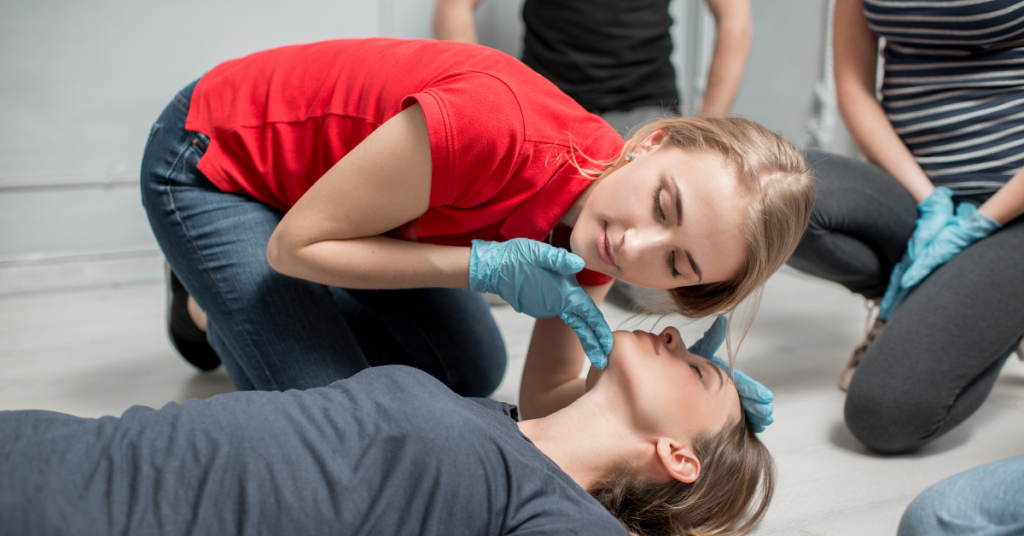
-
- Familiarise yourself with the renewal cycle of your certification, which typically varies between one to three years.
- Mark renewal dates in advance to avoid lapses in certification.
- Understand the requirements for recertification, which may include additional training or assessment.
-
- Subscribe to newsletters or updates from reputable first aid organizations.
- Attend seminars, webinars, or workshops focusing on the latest first aid techniques and knowledge.
- Regularly review current first aid guidelines and protocols.
-
- Participate in regular practical sessions to keep skills sharp.
- Enroll in refresher courses offered by your certification provider or other reputable organisations.
- Practice scenarios and drills, either individually or in groups, to reinforce learning.
-
Engaging with First Aid Communities:
- Join online forums, social media groups, or local chapters dedicated to first aid and emergency response.
- Share experiences, seek advice, and stay connected with peers who are also certified.
- Leverage community resources for updated information, tips, and continuous learning opportunities.
The First Aid Nest run public and workplace first aid courses, Australia wide.
Our workplace first aid courses can be run at your site.
Our public classes are here in Sydney and are the best option if you are an individual, a couple or a group
of just a few people.
Our sophisticated system will take the headache out of renewal for you too. Lose your certificate? No problem, just log in and download your certificate again anytime. We will also send you reminders about when your certificate is about to expire!
Book your spot or workplace with us today, contact us with any questions, or head to our FAQ page
